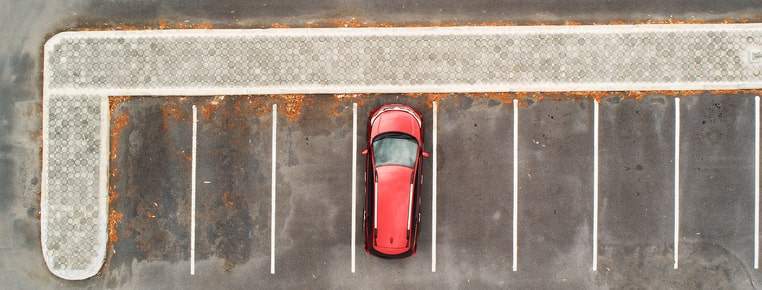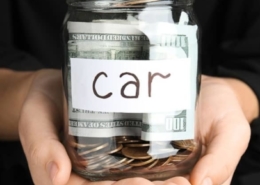How Supply and Demand Affect New Car Prices
Discover how supply and demand dynamics impact the prices of new cars.
If you’ve ever wondered why the price of a new car fluctuates over time, the answer lies in the fundamental principle of supply and demand.
Understanding how supply and demand affect new car prices can provide valuable insights into the automotive market.
Let’s explore the various factors that influence the pricing of new cars, from consumer behavior and market trends to economic conditions and industry dynamics.
Car Buying Tip: Buying a car today can be tricky, with consumers paying well over MSRP. But don’t worry! Gather a few free dealer price quotes to compare dealer prices and score a great deal.
Understanding Supply and Demand
Supply and demand are fundamental economic concepts determining a product’s equilibrium price and quantity.
In the context of new car prices, supply refers to the number of vehicles available for sale, while demand represents consumers’ desire to purchase those vehicles.
Definition and Basics
Supply refers to the number of cars that automakers and dealerships are willing to sell at a given price.
Demand, conversely, signifies the number of cars consumers are eager to buy at a particular price.
The market reaches equilibrium when supply and demand balance, resulting in stable prices.
How Supply and Demand Affect New Car Prices
When determining the price of new cars, the interplay between supply and demand plays a crucial role. Let’s delve into the specifics of how supply and demand dynamics impact the cost of purchasing a brand-new vehicle.
1. Production Capacity and Availability
The production capacity of manufacturers directly influences the supply of new cars. If car manufacturers can produce many vehicles, the supply will be higher, which can put downward pressure on prices.
Conversely, if production capacity is limited, the supply will be scarce, leading to higher prices due to increased demand.
2. Consumer Preferences and Trends
Consumer preferences and trends heavily influence the demand for new cars.
Factors such as the popularity of specific vehicle models, technological advancements, and changing consumer needs can significantly impact the demand curve.
When a particular car model is in high demand, automakers can increase its price due to the limited availability, creating a sense of exclusivity.
3. Economic Conditions
Economic conditions, such as inflation, interest rates, and disposable income, are crucial in shaping the demand for new cars.
During economic growth and stability periods, consumers are more willing to spend on big-ticket items like cars, leading to higher demand and potentially higher prices.
On the other hand, during economic downturns, consumer demand may decrease, resulting in more competitive pricing to stimulate sales.
4. Seasonal and Cyclical Factors
Seasonal and cyclical factors can also impact new cars’ supply and demand dynamics.
For example, many dealerships offer discounts and promotions at the end of the year to clear out older inventory and make room for new models.
Similarly, introducing new models can surge demand, increasing prices until the initial excitement subsides.
5. Government Regulations and Incentives
Government regulations and incentives can influence the supply and demand of new cars.
For instance, tax credits or rebates for purchasing electric or hybrid vehicles can boost demand for these models.
Additionally, regulations related to emissions standards or safety requirements can impact the supply of specific vehicle types, potentially affecting their prices.
6. Competition in the Automotive Market
Competition among automakers also plays a significant role in shaping new car prices.
When several manufacturers produce similar vehicles, the competition intensifies, leading to price wars and lower profit margins.
Conversely, if a particular brand or model enjoys a monopoly or has limited competition, the manufacturer can set higher prices due to the lack of alternatives in the market.
When New Car Supply is Greater than Demand: A Buyer’s Advantage
When buying a new car, there are times when the supply of vehicles surpasses the consumer demand. This scenario creates a favorable situation for buyers, who hold the upper hand in negotiations and can secure better deals.
Let’s explore the advantages that arise when supply outweighs demand in the new car market.
- Increased Competition Among Sellers: Car dealerships face heightened competition to attract buyers when supply exceeds demand. To move their inventory, dealers may offer discounts, incentives, or other favorable terms to entice customers. As a buyer, you can leverage this situation to negotiate a lower price or request additional perks, such as free upgrades or extended warranties.
- More Choices and Options: With many cars available, buyers can access a broader selection of models, colors, and features. This surplus of choices empowers you to find the perfect vehicle that meets your preferences and needs. Before deciding, you can explore different makes and models, compare specifications, and even test-drive multiple cars.
- Flexibility in Timing: When supply exceeds demand, buyers have less urgency to make an immediate purchase. You have the luxury of taking your time, researching, and waiting for the most opportune moment to strike a deal. This flexibility can lead to more informed decisions, ensuring you obtain the best value for your money.
- Negotiating Power: In a buyer’s market, where supply surpasses demand, buyers hold more substantial negotiating power. Sales representatives and dealerships are more inclined to accommodate your requests and provide attractive terms to secure your business. Whether it’s negotiating the price, financing options, or added benefits, you have a greater chance of getting a deal that aligns with your budget and preferences.
- Potential for Lower Prices: When there is a surplus of vehicles, sellers may be compelled to lower their prices to stimulate demand and reduce their inventory. This situation can translate into significant savings for buyers, allowing you to purchase a new car at a more affordable price than during periods of high demand.
It’s important to note that the dynamics of supply and demand in the automotive market can fluctuate.
Therefore, it’s advisable to stay informed about market trends and be prepared to seize the opportune moments when supply outpaces demand. Doing so can optimize your chances of securing a great deal when buying a new car.
Remember, the advantage of a buyer’s market lies in your ability to negotiate, explore options, and make well-informed decisions.
So, keep an eye on the supply and demand dynamics, and when the scales tip in your favor, seize the opportunity to drive away in your dream car at an excellent price.
When Demand is Greater than Supply: Navigating a Seller’s Market
When buying a new car, there are times when the demand for vehicles exceeds the available supply. This scenario creates a seller’s market, where sellers have the advantage due to limited inventory.
Let’s explore the challenges and strategies when demand outpaces supply in the new car market.
- Limited Availability and Higher Prices: When demand is more significant than supply, car dealerships may experience a scarcity of popular models or specific configurations. As a result, prices tend to be higher as sellers capitalize on the increased demand. Buyers may encounter less room for negotiation and find it challenging to secure a lower price.
- Competitive Buying Environment: With limited supply, a seller’s market can increase buyer competition. Multiple customers may be vying for the exact vehicle, making it essential to act swiftly and decisively. Being prepared with financing options and necessary documents can give you an edge in a competitive buying environment.
- Less Room for Customization: In a seller’s market, automakers often prioritize producing popular or high-demand models, limiting the availability of customization options. Due to limited choices, buyers may need to compromise on certain features or configurations. Flexibility in preferences and willingness to consider alternative options can help navigate the constraints of a seller’s market.
- Timeliness is Key: When demand exceeds supply, acting promptly becomes crucial. Keeping a close eye on market trends and staying informed about upcoming releases can help you secure a vehicle before it becomes scarce. Establishing contact with dealerships in advance and expressing your interest in specific models is beneficial to increase your chances of being notified when they become available.
- Consider Pre-Owned Options: When faced with limited supply and higher prices in the new car market, exploring pre-owned vehicles can be a viable alternative. Pre-owned cars often provide good value for money, and the selection tends to be broader than new cars in a seller’s market. Conducting thorough research and getting a comprehensive vehicle history report can ensure a reliable and satisfactory purchase.
- Stay Vigilant for Special Deals and Incentives: Even in a seller’s market, dealerships may offer special deals, promotions, or incentives to attract buyers. Keeping an eye out for such opportunities can help you secure a better price or additional benefits. Additionally, exploring multiple dealerships and comparing offers can increase your chances of finding a more favorable deal.
Navigating a seller’s market requires patience, diligence, and strategic decision-making.
While the limited supply and higher prices may present challenges, being well-informed, acting promptly, and considering alternative options can help you secure a new car that meets your needs and budget.
Remember, market dynamics are ever-changing, and a seller’s market can transition into a buyer’s market over time.
By staying informed about supply and demand trends, you can identify the most opportune moments to make your purchase and ensure a satisfactory buying experience.
The Value of Your Trade-In in a High-Demand Market
In a market where demand for new cars exceeds supply, the value of your trade-in vehicle becomes even more significant.
When supply is limited, dealerships often prioritize selling new cars, which creates a heightened demand for pre-owned vehicles. Understanding the value of your trade-in can provide you with leverage and potentially enhance your buying experience.
Here’s why your trade-in holds value in a high-demand market:
- Increased Demand for Pre-Owned Vehicles: With the limited availability of new cars, buyers turn to the pre-owned market as a viable alternative—this surge in demand for used cars results in dealerships actively seeking trade-in vehicles to replenish their inventory. The increased demand for pre-owned cars creates a favorable environment for trade-ins, as dealerships value and prioritize them to meet customer demands.
- Offsetting the Cost of a New Car: Trading in your current vehicle can help offset the cost of purchasing a new car. The value of your trade-in can be deducted from the total purchase price, reducing the amount you need to finance or pay upfront. This can give you a financial advantage and potentially lower your monthly payments.
- Convenience and Simplified Transaction: Opting for a trade-in eliminates the need for separate transactions for selling your old car and buying a new one. By trading in your vehicle at the dealership, you can streamline the process, saving time and effort. Dealerships are equipped to handle the paperwork, transfer ownership, and address outstanding loan balances, making the transaction smoother.
- Tax Benefits: In certain jurisdictions, trading in your vehicle can provide tax benefits. The trade-in value is often subtracted from the new car’s purchase price, reducing the taxable amount. This can result in lower sales tax and potentially save you money during the transaction.
- Expert Assessment and Fair Market Value: Dealerships have trained professionals who assess the value of trade-in vehicles. They consider factors such as the condition, mileage, market demand, and resale potential to determine a fair market value. Their expertise ensures you receive a competitive price for your trade-in, optimizing its value in a high-demand market.
- Avoiding the Hassle of Selling Privately: Selling your vehicle privately can be time-consuming and stressful and involves negotiating with potential buyers. Trading in your car with a dealership saves you the hassle of advertising, meeting with potential buyers, and dealing with the paperwork and potential risks associated with private sales. Instead, you can focus on finding the right new car while benefiting from the convenience of a trade-in.
High demand and low supply demonstrate why used cars are so expensive from 2021 to 2024. As buyers seek more affordable alternatives to higher-priced new vehicles, the increased demand for used cars puts upward pressure on their prices.
Additionally, limited inventory, supply chain disruptions, and other factors affecting new car production have further contributed to the rise in used car prices during this period.
It’s important to note that the value of your trade-in will ultimately depend on factors such as its condition, age, mileage, and market demand for that particular model.
Conducting research and understanding the market value of your trade-in can help you negotiate a fair price with the dealership.
In a high-demand market where new cars are scarce, your trade-in holds value and can contribute to a smoother and more cost-effective car-buying experience. Knowing how the trade-in process works in a dealership and leveraging the increased demand for pre-owned vehicles, you can maximize the value of your trade-in and enhance your overall purchase transaction.
FAQs about How Supply and Demand Affect New Car Prices
Why do new car prices fluctuate?
New car prices fluctuate due to various factors, including changes in supply and demand dynamics, consumer preferences, economic conditions, and seasonal or cyclical factors.
Are new car prices affected by the state of the economy?
Yes, the state of the economy can significantly impact prices. During economic downturns, demand may decrease, leading to more competitive pricing to stimulate sales. Conversely, during economic growth and stability periods, consumer demand for new cars tends to increase, potentially resulting in higher prices.
How do consumer preferences affect new car prices?
Consumer preferences play a crucial role in shaping the demand for new cars. If a particular vehicle model becomes trendy or highly sought after, the increased need can drive up its price due to limited availability. On the other hand, if consumer preferences shift towards more fuel-efficient or eco-friendly options, manufacturers may adjust their pricing strategies to align with market demands.
Do government regulations impact new car prices?
Government regulations can have a significant impact on new car prices. For example, emissions standards or safety requirements regulations can influence the supply and pricing of specific vehicle types. Additionally, government incentives such as tax credits or rebates for purchasing electric or hybrid vehicles can affect consumer demand and potentially influence pricing in those segments.
Are new car prices affected by seasonal factors?
Yes, seasonal factors can influence new car prices. Towards the end of the year, many dealerships offer discounts and promotions to clear out older inventory and make room for new models. Similarly, introducing new models can surge demand, increasing prices until the initial excitement subsides. Consumers must be aware of these seasonal fluctuations and plan their purchases accordingly.
How does competition in the automotive market affect new car prices?
Competition among automakers plays a crucial role in determining new car prices. When multiple manufacturers produce similar vehicles, the competition intensifies, leading to price wars and lower profit margins. In such cases, consumers may benefit from more competitive pricing. However, if a specific brand or model enjoys a monopoly or has limited competition, the manufacturer can set higher prices due to the lack of alternatives in the market.
In conclusion
Understanding how supply and demand dynamics affect new car prices is essential for consumers and industry professionals.
Factors such as production capacity, consumer preferences, economic conditions, government regulations, and competition all contribute to the pricing of new cars.
By staying informed about these influences, individuals can make more informed decisions when purchasing a brand-new vehicle.
Whether you’re a car enthusiast or a prospective buyer, recognizing the interplay between supply and demand will give you valuable insights into the ever-changing automotive market.
Don’t miss out on the opportunity to benefit from my complimentary step-by-step guide on purchasing a new car. This guide is meticulously crafted to provide a smoother and more knowledgeable car-buying experience.
If time is not on your side, worry not! Fill out the form below to request free price quotes for new cars. This hassle-free process allows you to effortlessly research and compare local dealerships’ prices, ensuring you discover the best deal available in your area.
So, get ready for an exciting ride! Explore your options, enjoy the journey, and ultimately find that perfect car at the right price. Happy car hunting!


















